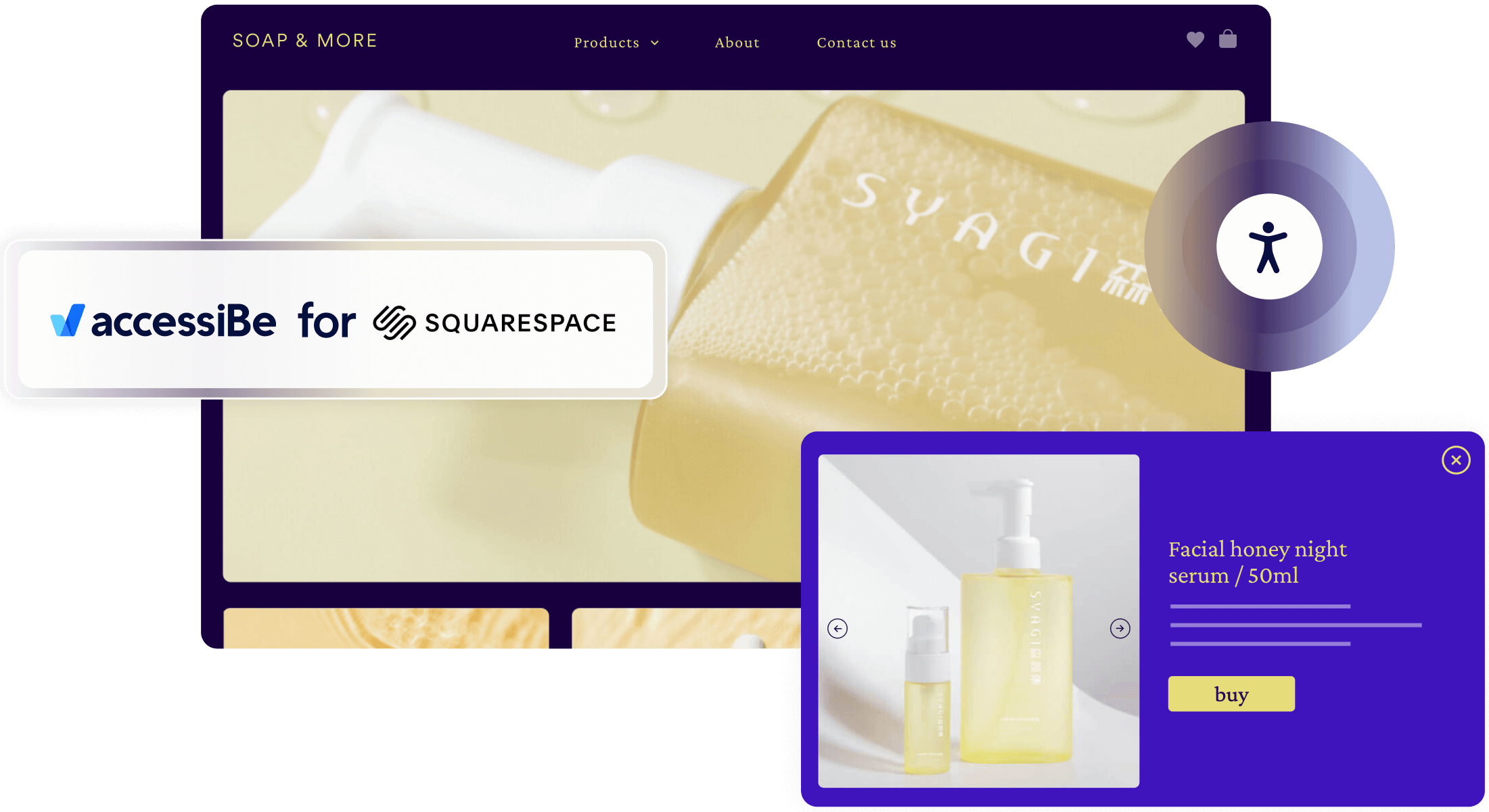Squarespace is an all-in-one website builder that is aimed at creatives and small businesses to help them easily create beautiful websites to showcase their work and products.
Squarespace’s promise of a beautiful website has come at the expense of its accessibility efforts. There are no preset accessible templates or accessibility plugins that can do the job. Squarespace does claim to have accessibility elements within many of their templates but this just refers to the most basic elements that every website has and happens to be included within the WCAG, which are the most widely adopted accessibility standards.
See the accessiBe installation guide for Squarespace here.
On Squarespace, being the design hub that it is, these elements mostly refer to design adjustments. Design-related and UI modifications make up roughly 20% of accessibility requirements. Having accessible elements is not the same as having an accessible website.
One of the biggest myths in the industry is that accessible websites can’t be beautiful. This is because accessibility is viewed as a rigid, time-consuming way of development that takes away from the freedom of design. Most platforms prefer to lessen the workload and don’t put in the effort to create accessible and beautiful templates.
Squarespace, a platform that has prioritized making pretty, eye-catching websites, has placed the responsibility in the hands of users. In fact, in their accessibility statement, Squarespace says “Squarespace can't provide advice about making your site compliant with specific web accessibility laws or acts.”
What this means is that Squarespace users who want to make their websites accessible need to do it themselves. This is a process that can take months to do manually or cost thousands of dollars to outsource to an accessibility expert. Users who aren’t up for the challenge can choose to walk away, but then they’d be leaving their beautiful website behind.



